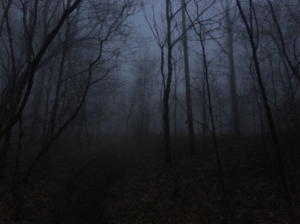The pinnacle of my entire elective and possibly all of medical school for me was being the medical and transport director of a simulated mass casualty incident. This occurred on the last night of the wilderness first responder course during my wilderness medical elective. I really enjoy taking on leadership positions and this really pushed me to my limits.
The scenario brief was given to us at 8 pm on a dark and rainy Thursday night. It consisted of “There has been a report of an airplane crash somewhere in the wilderness area due west of your current location. The flight report has indicated there were 12 people on board. Your task is to locate, triage, treat and extricate all the patients. Here’s a map of the area, good luck.”
There were 14 of us in our group and we had an overarching “incident commander” who ran everything from basecamp. I volunteered to be the field medical and transport director and we organized people into groups for different roles. After this three, two-person “Hasty” teams were sent out to locate the site and do initial triage using the “red, orange, green and black” triage system. Locating the scene seemed like a simple task, but due to the darkness, adverse weather and terrain of steep hills, valleys and dense bush it took almost 30 minutes to locate the crash site. Once the crash site had been located the Hasty teams radioed back their map coordinates and began triaging patients, we then had to haul all our medical and extraction gear through the bush to the crash site.
My job was to assign people and supplies to patients depending on severity, availability, and accessibility. While doing all of this I also started organizing the extraction team to assess the best extrication routes and set up ropes and litters. Luckily the Incident commander radioed me saying the flight plan had been updated to 5 people instead of 12. As we had already located 5 patients I was happy to call in the Hasty triage teams to assist with medical assessment and extrication.
Our patients were as followed;
• One red, (highest priority) 40-year-old male, unstable c-spine, decreased LOC and an open femur fracture.
• Two yellows, (medium priority) both males in their 30’s one with a broken ankle, one with a broken wrist and a query rib fractures.
• One green, (low priority) a woman in her mid 30’s with minor cuts and bruises who was also incredibly upset and anxious due to the following;
• One Black. A 6-month-old baby, dead on arrival due to impact trauma. This was the baby of the red man and the green woman.
Also, did I mention it was pitch black, pouring with rain, all the patients were in the bottom of a gully with a stream running through it and there was an “airplane” of fire right beside thescene. Add in trying to organize 10 people to manage and transfer patients, a radio going off every 10 seconds wanting updates and the ‘green’ woman screaming in my ear it can all get a bit overwhelming.
Fast forward four hours and its now some-time after 1 am, we had transported all the patients to our designated extraction point, this involved multiple 3 km wheel and stretcher carries through some fairly dodgy terrain. Luckily no one had gotten injured, although we were all exhausted and mildly hypothermic. The evening was finished off with some wind-down beers and feedback from our mentors, all of whom were very happy with our operation.


No comments yet.
Leave a comment